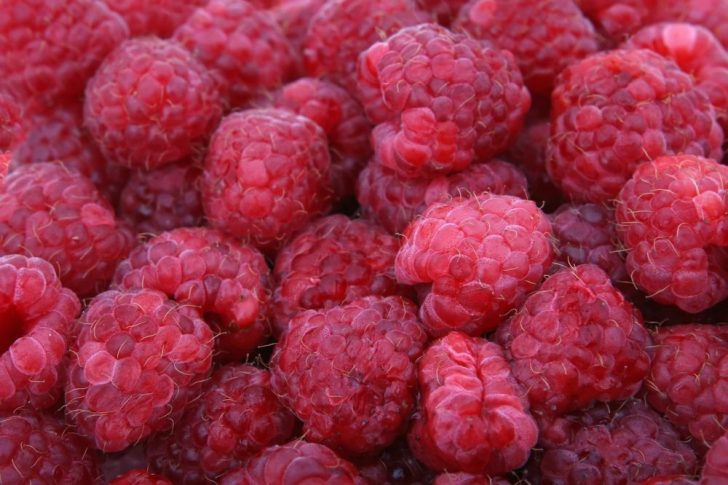Raw Food Diet: A Comprehensive Guide to a Healthy Lifestyle

Introduction:
The Raw Food Diet has gained significant popularity in recent years as people strive to adopt healthier lifestyles. This diet emphasizes the consumption of unprocessed, uncooked, and organic foods, mainly fruits, vegetables, nuts, and seeds. This article aims to provide an in-depth understanding of the Raw Food Diet, its various types, quantitative measurements, differences among them, and a historical overview of their pros and cons.
I. Overview of the Raw Food Diet:

The Raw Food Diet, also known as the Raw Foodism, promotes the consumption of food in its natural and unprocessed state, at or below 118F (48C). By consuming raw, uncooked foods, advocates argue that the diet preserves enzymes, essential nutrients, and phytochemicals that are typically destroyed through cooking. This section will delve into the reasons behind adopting the Raw Food Diet and its potential health benefits.
II. Comprehensive Presentation of Raw Food Diet:
2.1 Types of Raw Food Diet:
– High Raw: This approach involves consuming predominantly raw foods while allowing for some cooked and processed foods in moderation.
– Raw Till 4: This variation entails eating raw foods until 4 pm, after which a cooked meal is allowed.
– 80/10/10: Also known as the Low-Fat Raw Vegan (LFRV) diet, it advocates for 80% of total calories from carbohydrates, 10% from protein, and 10% from fat.
– Juice Fasting: This temporary diet involves consuming only freshly extracted juices for a specific period, promoting detoxification and weight loss.
– Gourmet Raw: This version focuses on preparing elaborate raw dishes using various techniques and specialty ingredients.
2.2 Popular Raw Food Diet Practices:
– Raw Food Smoothies and Juices: An influential aspect of the Raw Food Diet, these beverages provide concentrated nutrition while maintaining the raw integrity of fruits and vegetables.
– Raw Food Desserts: Utilizing ingredients like nuts, dates, and cacao, these guilt-free desserts offer the satisfaction of indulgence without compromising on health.
– Raw Food Snacks: From kale chips to energy balls, these convenient and nutrient-dense snacks form an integral part of the Raw Food Diet.
III. Quantitative Measurements of Raw Food Diet:
To gauge the nutritional composition of a Raw Food Diet, it is essential to consider specific quantitative measurements. This section will discuss the nutrient density, calorie intake, and potential nutrient deficiencies associated with a raw food lifestyle.
IV. Differentiating Between Raw Food Diets:
Although the foundation of all Raw Food Diets centers around the consumption of unprocessed, uncooked foods, differences exist in their approaches. This section will explore the contrasts between various Raw Food Diets, such as the degree of rawness, macronutrient ratios, and culinary techniques employed.
V. A Historical Review of Pros and Cons of Raw Food Diets:
5.1 Pros:
– Increased nutrient intake: Raw foods are rich in vitamins, minerals, and enzymes that play a vital role in overall health.
– Enhanced digestion: Raw foods contain fiber, which aids in digestion and promotes a healthy gut.
– Weight loss and maintenance: The high fiber content makes raw foods more filling, potentially leading to weight loss and weight management.
5.2 Cons:
– Nutritional deficiencies: A poorly planned Raw Food Diet may lead to deficiencies in essential nutrients like vitamin B12, iron, and omega-3 fatty acids.
– Limited food options: Finding raw food alternatives may prove challenging, particularly when dining out or during social gatherings.
– Food safety concerns: Consumption of raw animal products or improperly handled raw foods may increase the risk of foodborne illnesses.
Conclusion:
The Raw Food Diet offers a unique approach to nutrition, focusing on the consumption of unprocessed and uncooked foods. Understanding the various types, quantitative measurements, differences, and historical pros and cons allows individuals to make informed decisions regarding their dietary preferences. By embracing the Raw Food Diet, individuals can embark on a journey towards a healthier and more natural lifestyle.
[Videoklipp kan infogas här]
Målgrupp: Privatpersoner
Tone of voice: Formell
FAQ
What is the Raw Food Diet?
What are the different types of Raw Food Diets?
What are the pros and cons of the Raw Food Diet?
Fler nyheter
Barnmorskemottagning i Malmö: Professionell och personlig mödravård
Introduction: The Raw Food Diet has gained significant popularity in recent years as people strive to adopt healthier lifestyles. This diet emphasizes the consumption of unprocessed, uncooked, and organic foods, mainly fruits, vegetables, nuts, and s...
05 juli 2025
Att hitta rätt tandläkare i Halmstad
Introduction: The Raw Food Diet has gained significant popularity in recent years as people strive to adopt healthier lifestyles. This diet emphasizes the consumption of unprocessed, uncooked, and organic foods, mainly fruits, vegetables, nuts, and s...
01 juli 2025
Invisalign: Den moderna lösningen för raka tänder
Introduction: The Raw Food Diet has gained significant popularity in recent years as people strive to adopt healthier lifestyles. This diet emphasizes the consumption of unprocessed, uncooked, and organic foods, mainly fruits, vegetables, nuts, and s...
08 juni 2025
Basal hemsjukvård: en grundläggande betraktelse för trygg vård i hemmet
Introduction: The Raw Food Diet has gained significant popularity in recent years as people strive to adopt healthier lifestyles. This diet emphasizes the consumption of unprocessed, uncooked, and organic foods, mainly fruits, vegetables, nuts, and s...
07 juni 2025











